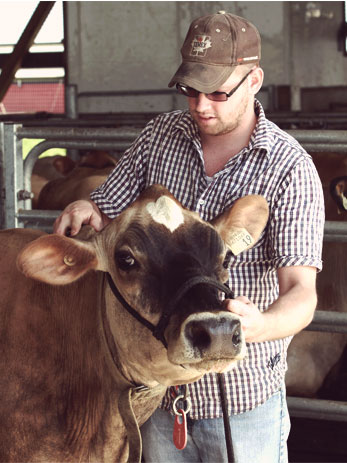The article below is a really well written piece designed to make people pause. So it is somewhat dismaying to see the type of comments that were left. Of note a U of Guelph Food, Ag.& Resource Economics, A. Boecker, also leaves his negative views there. He doesn't think Mr. Muirhead knows what he is talking about. Someone has a lot of work to do. -CG
- Bruce Muirhead
- Sat Feb 23 2013 00:01:00
With all of the hyperbole spouted about Canada’s supply-management system, it’s time to take a step back and remind ourselves of some well-worn but nonetheless true clichés.
First, what works in theory, doesn’t always work in practice.
In theory, free and unfettered dairy markets would ensure that consumers enjoy the lowest possible prices and dairy farmers receive a fair price for their product.
In practice, it doesn’t work anywhere in the world.
New Zealand is frequently touted as the free-market model for the world. Yet consumer prices for milk in New Zealand, which has the most favourable weather conditions for dairy farming on Earth, are significantly higher than those in Canada. Indeed, during the fall of 2011, the New Zealand parliament held an inquiry into the rising price of milk.
In the United States, taxpayer subsidies to dairy farmers can approach the retail price of milk. Consumers pay twice for milk, once in the store and a second time through their taxes.
Even with those subsidies, the United States Department of Agriculture reports American cheddar cheese costs $12.54 US per kilogram. In Canada the average national price for cheddar is $13.70 Cdn per kilogram. In Canada, dairy farmers receive no government subsidies.
Second, those who don’t know their history are doomed to repeat it.
Dairy supply management was first introduced in Ontario in 1971 to address a glaring disparity between farmers and processors. At the time, the (very low) farm-gate price was set by processors, allowing that sector to amass substantial profit.
Currently, three Canadian processors control 80 per cent of the consumer market for milk and dairy products. Eliminating supply management will eliminate the ability of farmers to deal with processors fairly, but it won’t eliminate the concentration of processors.
As Canadians, we know from experience in telecommunications and other sectors that concentration in a few hands means higher prices for consumers.
We have to ask ourselves if supply management has lived up to the promise on which it was launched 40 years ago,
I would say emphatically yes. In Ontario, dairy remains, by and large, a family operation — the average herd size is 78 cows — which doesn’t impose debilitating environmental costs on the land. In New Zealand, there is now talk that its system is unsustainable, the result of too many cows on too little land, moving into marginal areas of the country.
As well, supply management provides farmers with a reasonable income. In Canada, farmers are not getting rich, but they are getting by without government help, a situation that is very unusual in agriculture.
The Europeans are demanding access to Canada’s dairy market as the free trade negotiations come down to the wire. Canadian farmers cannot compete against European subsidies.
All Canadians who want to preserve this country’s rural economy and do not want their tax dollars used to pay massive subsidies to farmers should stand behind supply management. It works on so many levels.
Bruce Muirhead is an associate vice-president of external research at the University of Waterloo.



.jpg)

